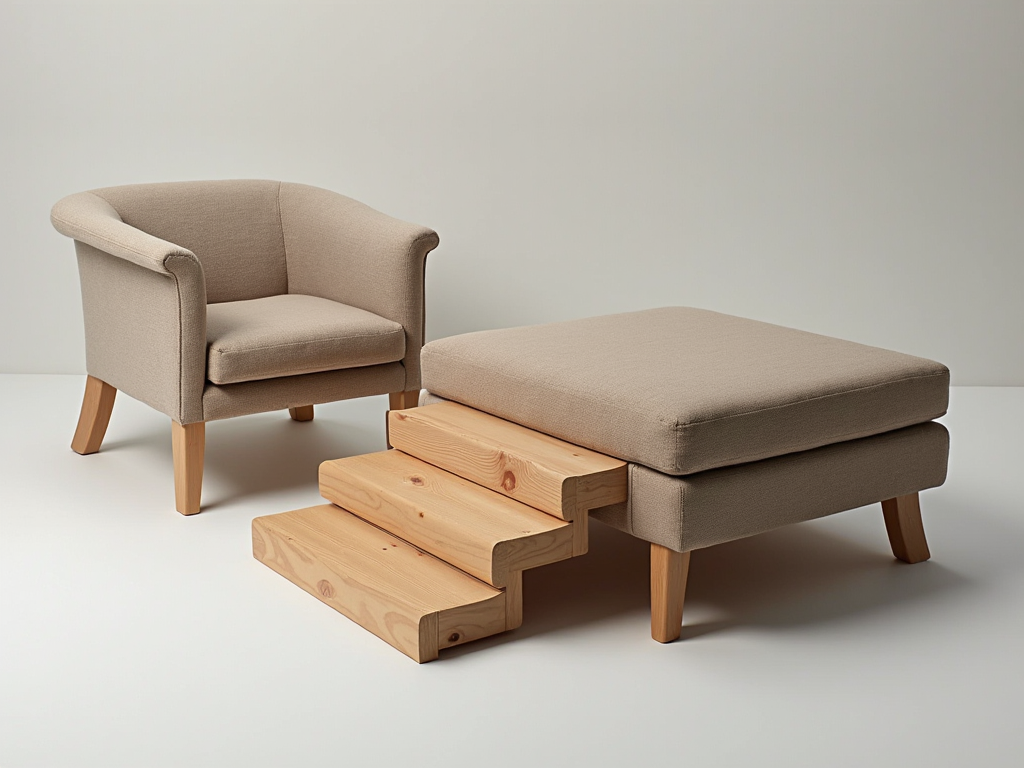Quick facts
Can't find the answer you're looking for? Please get in touch with our friendly team.
Why are ramps so expensive?
Ramps can be expensive due to the cost of materials, such as high-quality wood or metal, and the complexity of their design. Customization, safety features, and installation also contribute to the overall price, making them a significant investment for accessibility in home decor.
Category Overview
Introduction
Ramps serve a crucial purpose in enhancing accessibility within homes, allowing effortless movement for individuals with mobility challenges. Whether it's for wheelchairs, strollers, or even heavy equipment, ramps transform spaces by providing a smooth transition over steps and thresholds. Beyond their functional role, ramps can significantly improve daily life by fostering independence and comfort, ultimately creating a more inclusive environment for everyone.
Functionality
The primary function of ramps is to facilitate seamless access between different levels of a home. They're commonly used in various settings—from living rooms to garages—ensuring that anyone can navigate spaces easily. For instance, a ramp leading to the front porch allows guests who use wheelchairs to enter without assistance. Many modern options feature adjustable heights and collapsible designs, making them versatile and space-saving choices for both indoor and outdoor use.
Design & Style
Ramps come in an array of styles and materials tailored to fit diverse decor themes. Common materials include durable wood, sturdy metal, and lightweight plastic—each offering unique aesthetic qualities. You might find traditional wooden ramps that blend beautifully with rustic decor or sleek metal options perfect for minimalist homes. Additionally, customizable features like colors and finishes allow you to personalize your ramp to match your interior style seamlessly.
Practical Considerations
When selecting the right ramp for your home, consider the specific needs based on usage frequency and location. Evaluate room sizes; narrower spaces may benefit from compact models that don’t obstruct walkways. Durability is essential if the ramp will handle significant weight frequently; heavy-duty options are ideal in these cases. Avoid common pitfalls such as choosing a ramp that's too steep or long for your space—aim for a gentle slope that provides safety without compromising accessibility.
Comparison and Alternatives
Materials play a significant role in the effectiveness of ramps; wood offers warmth but requires regular maintenance while metal provides durability with little upkeep needed. Additionally, design shapes matter—round ramps can be more aesthetically pleasing but may take up more space than rectangular ones designed to fit snugly against walls or furniture edges. When making decisions about which type fits best in your home, weigh factors like style preference against practical utility.
Trends and Popular Items
Currently trending are eco-friendly ramps made from sustainable materials like bamboo or recycled composites, appealing to environmentally conscious consumers looking to make ethical choices in their home design. The rise of modern industrial styles also influences ramp design with sleek lines and minimalistic aesthetics gaining popularity among homeowners seeking simplicity without sacrificing functionality. Incorporating a well-chosen ramp into your home not only enhances accessibility but also contributes positively to your overall decor scheme while meeting practical needs effectively.


